Best Garbage Disposals for Septic System Review
- Written by Yaviandyl
- Published in Disposal Units
- Permalink
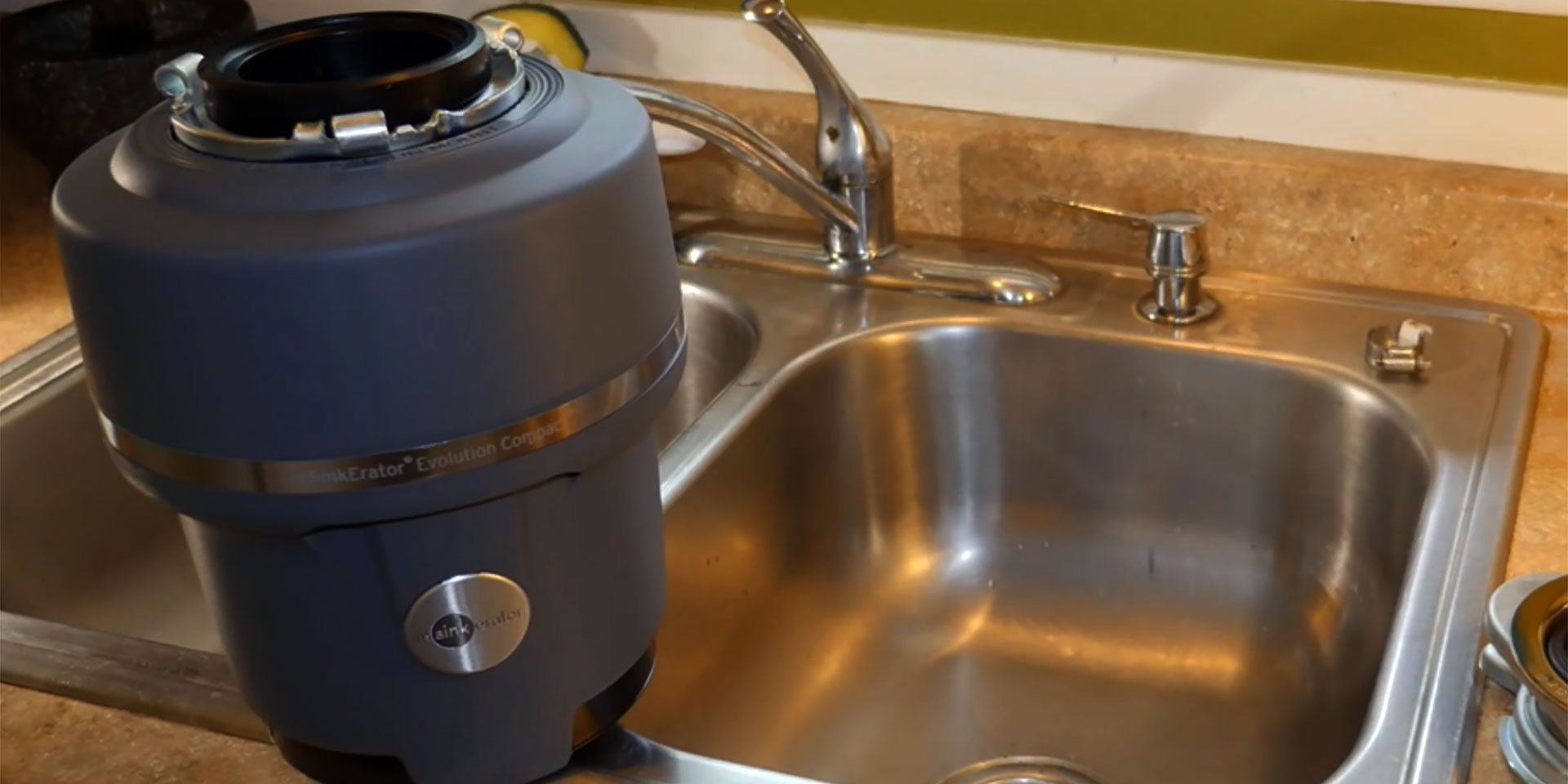
No matter how much you enjoy cooking, the problem of food waste, familiar to every housewife, can spoil the mood. Potato peelings, onion skins, fish bones, and tea leaves do not only clog drains and pipes, but also create a favorable environment for the reproduction of microbes, and also attract the attention of unwanted tenants – cockroaches and mice.
The manufacturers of household appliances have found a solution and created garbage disposals or food waste shredders, but choosing the best garbage disposals for septic might not be an easy task. Usually, they do not take up much space as they are neatly positioned under the sink where they easily grind food waste into tiny bits that can be rinsed down the drain.
Usually, a shredder is simple to install; step-by-step precise instructions are included with the equipment; nevertheless, it is advised that you hire a professional plumber to connect the grinder to the sewer. Whenever you have to choose garbage disposal, pay attention to the following characteristics – the power of the motor, size of the shredder and septic tank, level of noise, type of feed, etc.
Сan you have a garbage disposal with a septic system?
Garbage disposals are a convenient way to get rid of food scraps, but some homeowners are concerned that they might not be compatible with septic systems. In general, there is no reason you can’t have garbage disposal if you have a septic system – as long as you take some precautions. The important thing to remember is that you need to have your septic system serviced regularly to ensure that it continues to function properly. Additionally, you should be careful about what you put down your garbage disposal. Avoid putting any food waste or other materials that could clog your septic system.
Do you need a special garbage disposal for septic systems?
If you have a septic system, you will need different garbage disposal than if you have a municipal sewer system. Septic systems require disposals that are designed to grind up solids so that they can be easily flushed out of the system. If you have a municipal sewer system, any standard garbage disposal will work fine.
Best garbage disposal for septic reviews
InSinkErator Evolution Septic Assist – best overall
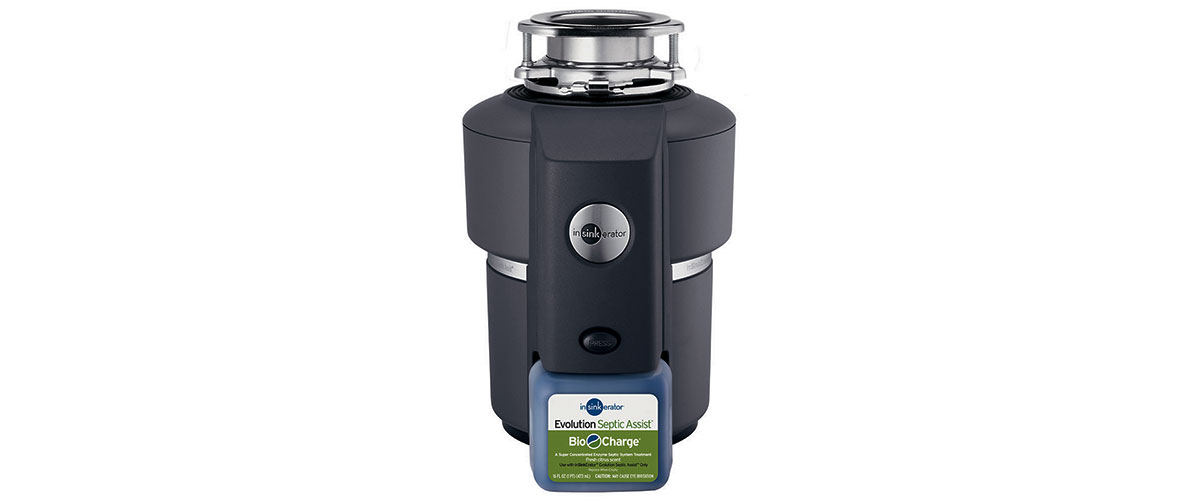
In case you need a high-quality and noiseless waste shredder, I would highly recommend you rivet your attention on InSinkErator Evolution Septic Assist. The company InSinkErator develops garbage disposals since 1927 and their experience allows them to create a tool that will help you solve the majority of your problems with food scraps.
Owing to SoundSeal Technology there will be no extra noise in your kitchen since it is significantly reduced for convenient operation. The shredder is equipped with a special durable 3/4 HP Dura-Drive induction motor with 1725 RMP speed. Made of galvanized steel with an enamel finish, the item will serve your purposes for many years and you will get an in-home warranty from the manufacturer for 8 years.
The item is quite heavy, as it weighs 22.1 pounds and it actually takes up quite a lot of space in a cabin under your sink. 2-Stage Multigrind Technology is one of the key characteristics of this disposer that allows shredding of even the hardest food scraps. Continuous feed alongside the system of automatic injection of enzyme-producing microorganisms enhances the rinsing of any food waste to the sewage-disposal tank.
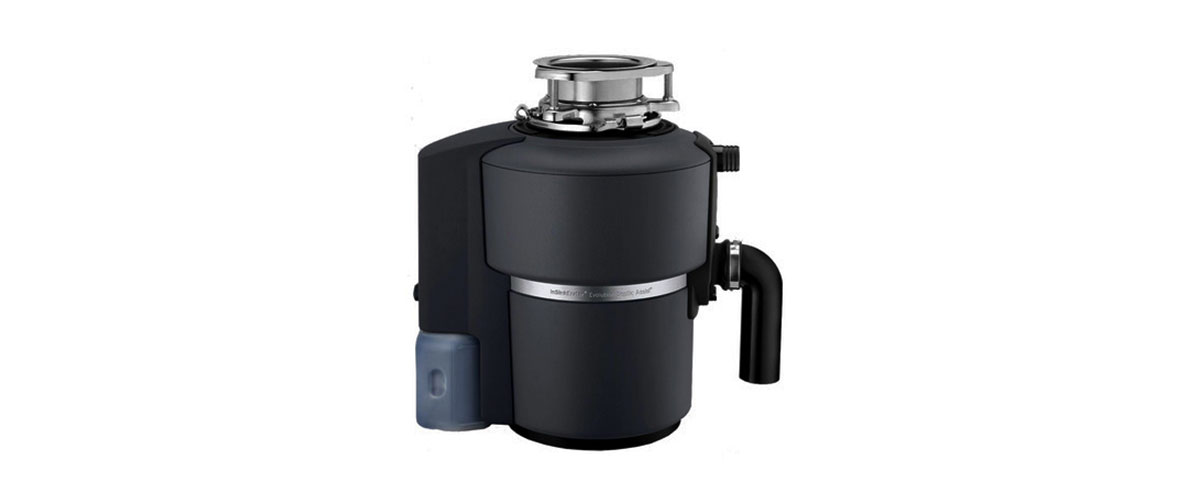
In comparison with its rivals, InSinkErator is the most expensive item on the market, but the price can be justified by the integrity of the disposer. Unlike Waste King L-8000 the product does not come with a pre-installed power cord.
Even though this garbage disposal is easy to install and operate, I faced a problem with the Bio-charge septic component that would not inject the enzyme at first and later it started to spill on the floor every time I tried to turn on the shredder.
All flaws aside, InSinkErator Evolution Septic Assist is the overall best garbage disposal for septic due to its whistle-quiet performance and high robustness.
Pros
- SoundSeal Technology to minimize noise
- Durable Dura-Drive induction motor
- Made of solid galvanized steel
- 2-Stage Multigrind Technology for enhanced performance
Cons
- Takes up a lot of space under the sink
- Bio-charge septic component spills on the floor
Waste King L-8000 – best budget
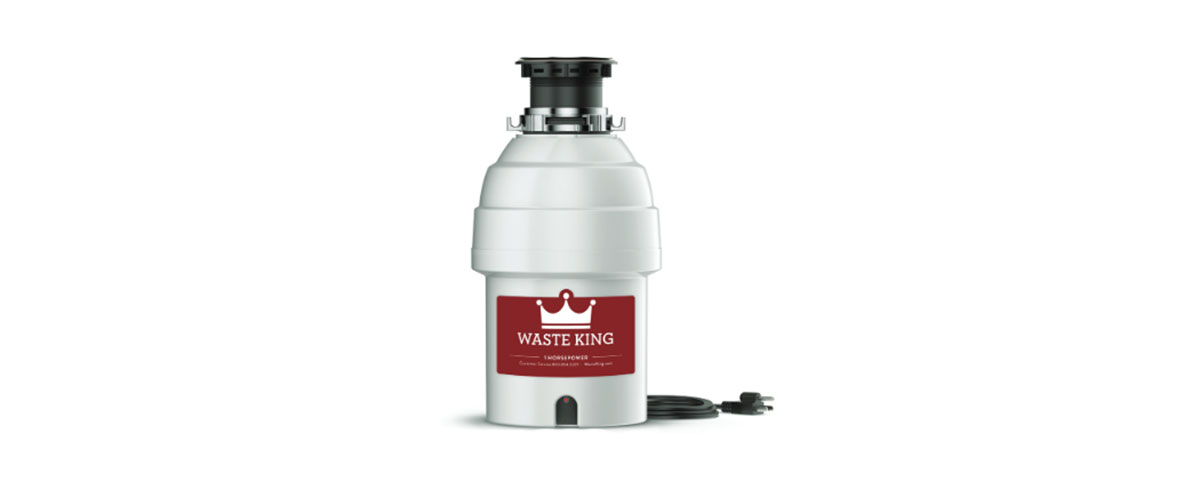
In case you are interested in a reasonably-priced, yet firm disposer, I believe you will enjoy the quality and functions of Waste King L-8000. It is heavy-duty garbage disposal made of stainless steel and corrosion-resistant plastic. In addition, you will get 20 years warranty from the producer. This garbage disposal for septic tanks is supplied with a 1 HP motor that operates at 2800 RMP.
The product is noise-proof, so there is no need to worry that it would cause any unpleasant sounds. It comes with a 32-inch power cord which eliminates any electrical work and can be connected to the pipe with the size of 1 1/2 inches. Owing to its compact size, this garbage disposal will comfortably fit in any cabin under your sink.
The internal grind details are made of stainless steel for better robustness; the continuous feed can be activated by a wall switch. Another prominent feature of this product is the EZ Mount system that can be installed effortlessly and cleaned fast owing to the changeable splash guard.
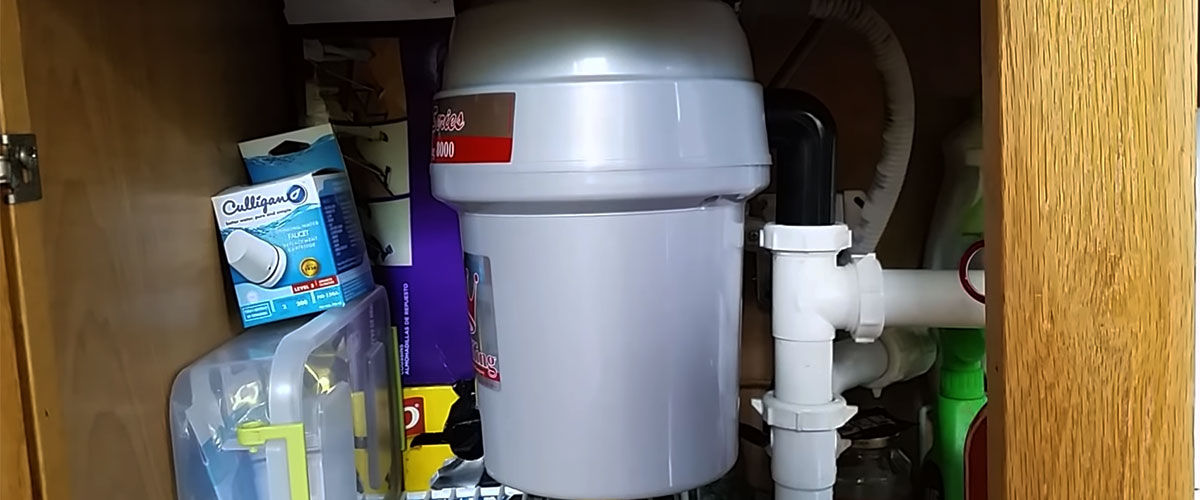
Waste King L-8000 is much lighter in comparison with InSinkErator as it weighs only 11.94 pounds contrasted to 22.1 pounds. Even though both InSinkErator and Moen GX100C have the same motor and the same feed, the latter is twice as expensive as the rival.
I would describe this item as energy-efficient, yet there were some minor flaws that disappointed me. This unit uses a rubber gasket to retain the locking ring in place instead of a metal ring, which will decay and fail over time. Since the disposer does not come with a wrench, there is no way to rotate it back in a case of a jam. Moreover, it can leak right from the seal between the sink and the disposal flange.
All in all, Waste King L-8000 is great septic-friendly garbage disposal of decent quality despite its low price.
Pros
- Made of stainless steel and corrosion-resistant polymer
- Comes with a 32-inch power cord
- Compact size to fit in any cabin
Cons
- A non-durable rubber gasket to keep the locking ring in place
- No way to rotate it back in case of jams
Moen GX100C – also a great choice

Another powerful garbage disposal that deserves your attention is Moen GX100C. The manufacturer claims their item to be the strongest cleanup for those, who like to experiment while cooking. The tool is equipped with a permanent 1 HP magnet Vortex motor and owing to 2800 RMP speed it can shred even the hardest food waste with ease.
This 13-pound disposer is made of polished stainless steel to provide durability and robustness. I have no doubt that you will be happy to discover that Moen GX100C can shred even such food scraps as fruit pits, corncobs, and even chicken bones. Such efficient operation is achieved due to continuous feed.
The SoundSHIELD technology, which provides sound-deadening insulation, is one of the key features of this disposer. This item’s compactness will appeal to you, especially if you value kitchen space. The device comes with a pre-installed power cord, and you can easily install the garbage disposal yourself thanks to the Universal XPRESS Mount, which can suit most existing 3-bolt mounting kits.
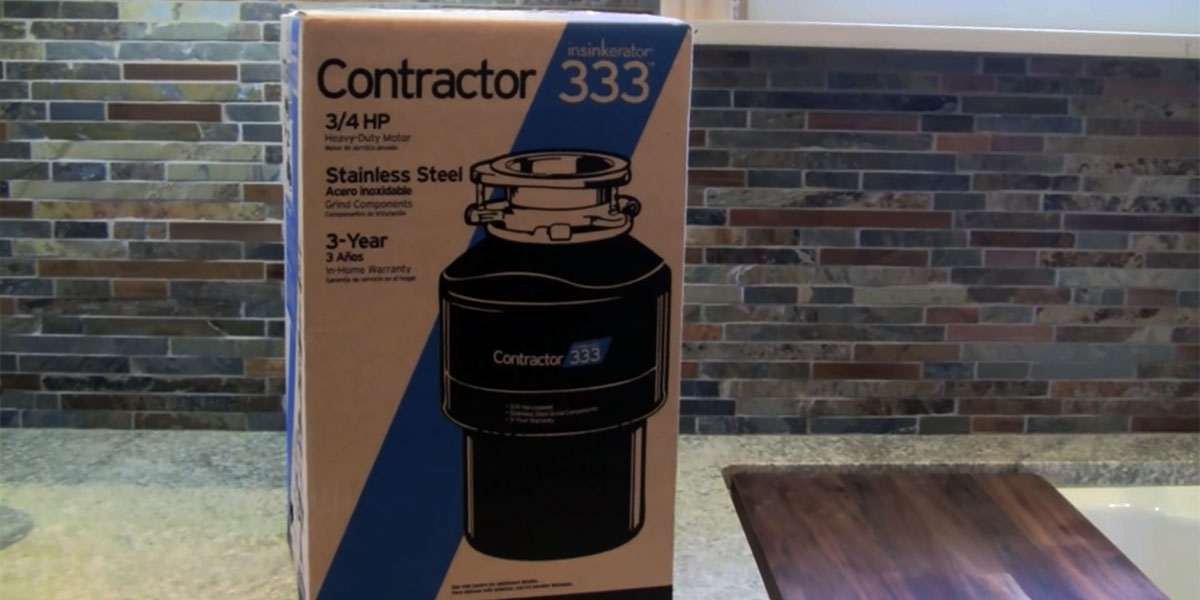
Moen GX100C is a lot lighter device than InSinkErator, and yet it comes with a more powerful motor. Moreover, InSinkErator does not come with a power cord, unlike the rival.
I find it convenient that Moen GX100C contains stainless steel grind components and a grinding chamber is made of corrosion-resistant and glass-filled polyester and nylon. Unfortunately, this product doesn’t have an auto-reverse, so you will face some inconveniences in case of jams. Even though the shredder is supposed to be noiseless, in fact, it turned out to be annoyingly loud.
In General, Moen GX100C is an extremely strong garbage disposal that can grind almost any food scraps with ease.
Pros
- Equipped with permanent 1 HP magnet Vortex motor
- Made of polished stainless steel
- Comes with a pre-installed power cord
Cons
- Does not have an auto-reverse
- Works much louder than stated by the manufacturer
What size garbage disposal do I need?
When it comes to choosing the best garbage disposal for septic system there are a few things you need to take into account. The size of the disposal is one of the most important factors, as it will determine how much waste it can handle at once. There are four basic sizes:
- 3/4 HP: This is the smallest size, and it’s ideal for small households with 1-2 people. It can handle about 2-3 plates of food waste at a time.
- 1 HP: This is medium-size, and it’s suitable for households with 3-5 people. It can grind up to 4 plates of food waste at a time.
- 1.5 HP: This is a large size, and it’s perfect for households with 6 or more people. It can take care of 6-8 plates of food waste at once.
- 2 HP: This is the largest size, and it’s designed for commercial use. It can handle up to 16 plates of food waste at a time.
How to use garbage disposal for septic?
If you are using a garbage disposal in your home, it is important to know how to use it properly with your septic system. A septic safe garbage disposal can help reduce the amount of food waste that goes into your septic tank, but there are a few things you need to keep in mind.
First, make sure that any food scraps that you put into the garbage disposal are small enough to fit through the openings. Otherwise, they can clog up the pipes and cause problems with your septic system.
Second, avoid putting things like chicken bones or other hard objects into the disposal. These can damage the blades and cause them to break.
Third, run cold water through the disposal for at least 15 seconds before and after you use it. This will help to flush any food scraps down the drain and keep your septic system working properly.
What can I put down in a garbage disposal for septic?
The best answer to this question would be to consult with your septic system provider, as different systems will have different requirements. However, some general tips include avoiding fats, oils, and grease (FOG), which can cause clogs, and instead opting for small bones or fruit pits. You should also avoid putting anything fibrous down the disposal, such as corn husks, as these can also cause clogs. Finally, you’ll want to run plenty of water down the drain after using the disposal to help flush any remaining food particles and waste.
FAQ
Can you have a dishwasher with a septic tank?
Yes, you can have a dishwasher with a septic tank. There are a few things to keep in mind, however. Firstly, make sure that your dishwasher is not overloading your septic tank. Secondly, use a dishwasher detergent that is safe for septic tanks. And finally, run your dishwasher on a regular basis to prevent build-up in your septic tank.
What will ruin a septic system?
A septic system will ruin if it is not properly taken care of. This includes proper maintenance and not overloading the system with too much waste. Additionally, if the septic system is not sized properly for the home or business, this can also lead to problems and eventual ruin. Improperly treated sewage can also cause a septic system to fail.
How do you know if your septic is full?
If you have a septic tank, it’s important to know when it is full. One good way to tell whether your septic system is full or not working properly is by the color of your water. Normally, a person would observe that their toilet will produce either black-colored or dark-colored liquid with the following characteristics: strange odors, gurgling noises, or sewage backup. If you see any of these signs, it’s important to call a septic professional to come and assess the situation as soon as possible. Left untreated, a full septic tank can lead to serious environmental issues and health concerns.
How do I clean my septic tank?
You don’t, but it can be pumped. Your septic tank is not something that you need to clean–the waste breaks down and turns into liquid sludge in the tank, which then gets pumped and transported away. But if you find that your local government only provides sewage or grease reservoir services and does not pump septage waste, you may need to have your septic tank pumped out every three to five years.

